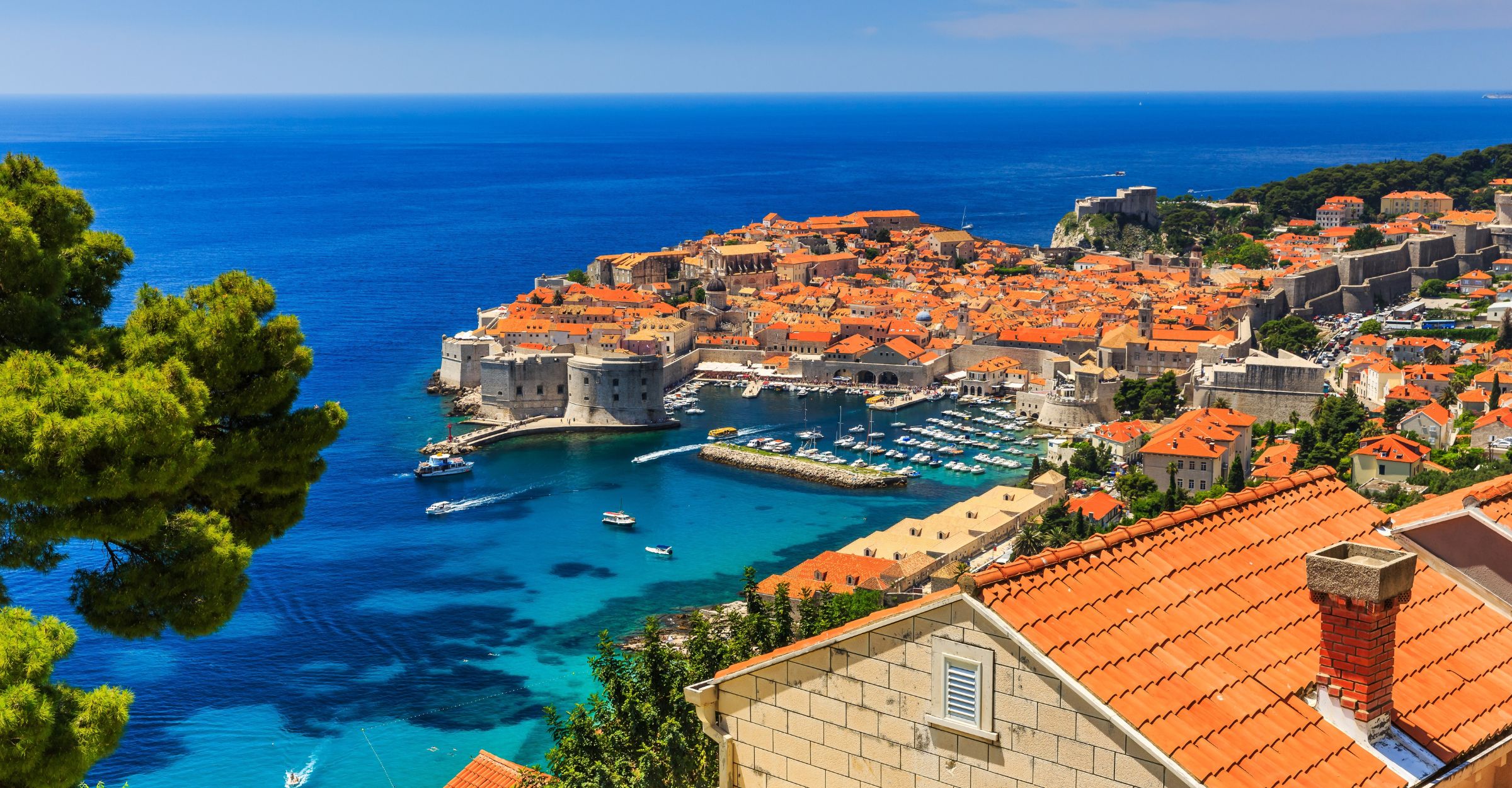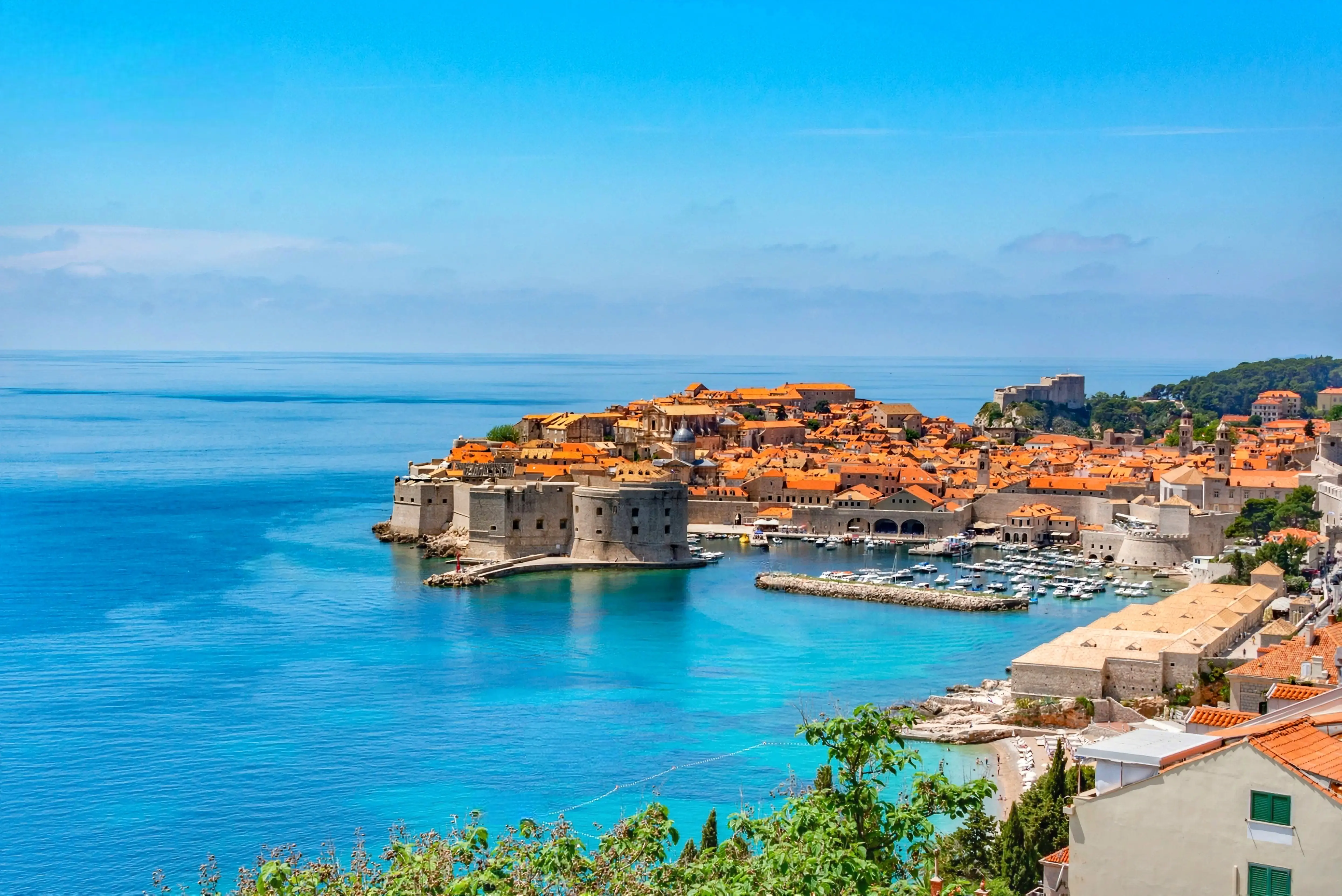



Dubrovnik is a city in southern Croatia fronting the Adriatic Sea. It's known for its distinctive Old Town, encircled with massive stone walls completed in the 16th century. Its well-preserved buildings range from baroque St. Blaise Church to Renaissance Sponza Palace and Gothic Rector’s Palace, now a history museum. Paved with limestone, the pedestrianized Stradun (or Placa) is lined with shops and restaurants.
May to June & September to October (shoulder seasons):
Pleasant weather
Fewer crowds than peak summer
Ideal for sightseeing, swimming, and walking the city walls
July & August (peak season):
Very crowded and hot
Best for festivals (like the Dubrovnik Summer Festival), beachgoers
November to April:
Fewer tourists, lower prices
Many attractions and restaurants may have limited hours
By Air:
Dubrovnik Airport (DBV) is ~20 km from the city
Connected to major European cities, especially during tourist season
Bus or taxi to city center (approx. 30–40 minutes)
By Bus:
Long-distance buses from Zagreb, Split, and other Croatian cities
International buses from Montenegro and Bosnia & Herzegovina
By Car:
Scenic but winding coastal roads; note border crossings (especially via Neum in Bosnia)
By Ferry:
Seasonal ferries from Split and some Italian ports (like Bari)
City Walls of Dubrovnik
Walk the full 2-km loop for panoramic views of the Adriatic and Old Town
Old Town (Stari Grad)
A UNESCO World Heritage Site with limestone streets, baroque buildings, and charming squares
Rector’s Palace
Historic seat of the Republic’s rector; now a museum
Dubrovnik Cathedral
18th-century Baroque cathedral with a treasury of religious artifacts
Lovrijenac Fortress
"Dubrovnik’s Gibraltar" – dramatic clifftop fortress with great views
Cable Car to Mount Srđ
Offers breathtaking panoramic views of the city and islands
Lokrum Island
Just a 15-minute ferry ride; nature, botanical gardens, swimming spots, and a monastery
Banje Beach
Popular beach just outside the Old Town walls
Franciscan Monastery & Pharmacy
One of Europe’s oldest operating pharmacies (since 1317)
Game of Thrones Filming Locations
Join a themed tour to see spots like the Red Keep, Walk of Shame steps, and more
Walk the City Walls
Must-do! Takes ~1.5–2 hours
Go early morning or late afternoon to avoid the heat
Take a Kayak Tour
Paddle around the city walls or to nearby Lokrum Island
Sunset tours available
Ride the Dubrovnik Cable Car
Amazing view from Mount Srđ
Café and war museum at the top
Day Trips
Lokrum Island – nature, swimming, peacocks
Elaphiti Islands – peaceful, great for beaches and nature
Montenegro or Mostar (Bosnia) – full-day guided tours
Go Wine Tasting
Try local Croatian wines (especially Dingač and Pošip)
Visit nearby Pelješac Peninsula for wine tours
Watch the Sunset at Buža Bar
Cliff bar outside the city walls—stunning views over the Adriatic
Explore Game of Thrones Sites
King’s Landing walking tours for fans
Swim & Relax at Beaches
Banje Beach, Sveti Jakov, or Copacabana Beach
Cultural Events
Dubrovnik Summer Festival (July–August): music, theater, dance
Visit Museums
Cultural History Museum, War Photo Limited, Maritime Museum
Luxury:
Villa Dubrovnik – elegant sea-facing rooms, private beach, spa
Hotel Excelsior – iconic 5-star hotel near Old Town
Sun Gardens Dubrovnik – beachfront resort with pools and kids’ amenities
Mid-Range:
Hotel Stari Grad – boutique hotel inside Old Town
Berkeley Hotel & Spa – great value and excellent service
Budget:
Hostel Angelina – social and well-located inside Old Town
Guest House Luka – cozy, family-run, walkable to most attractions
Unique Stay:
Apartments & Villas in Old Town – perfect for an authentic experience
Lazareti Hostel – modern, great views
Local Dishes to Try:
Black Risotto (cuttlefish ink)
Peka (slow-cooked meat or seafood under a bell-shaped lid)
Grilled fresh fish
Rozata (Croatian crème caramel)
Octopus salad
Top Restaurants:
Proto – seafood fine dining, historic setting
Dubravka 1836 – near Pile Gate, great views
Taj Mahal – Bosnian-Croatian fusion, not Indian!
Pantarul – modern Croatian cuisine, local favorite
360 Dubrovnik – Michelin-starred with city wall views
Lucin Kantun – cozy and creative tapas-style dishes
Budget-Friendly:
Barba – seafood street food (try octopus burger!)
Preša – pizza and local dishes in a hidden alley
Glam Café – great coffee and breakfast
Cafés & Bars:
Cogito Coffee – best specialty coffee
Buza Bar – cliffside bar with incredible views
D’vino Wine Bar – perfect for Croatian wine flights
Dubrovnik was once the Republic of Ragusa (1358–1808), a powerful and independent maritime city-state.
The city has long valued diplomacy, education, and liberty — its motto is “Libertas” (Latin for freedom).
Dubrovnik was one of the first states in Europe to abolish slavery (in 1416).
One of Croatia’s most prestigious cultural events
Outdoor performances of theater, classical music, and dance in historic settings
Honoring the patron saint of Dubrovnik
Colorful procession with locals in traditional dress, music, and church ceremonies
Inscribed in UNESCO's Intangible Cultural Heritage list
Traditional folk dance accompanied by the lijerica (a 3-stringed instrument)
Performed at local festivals and weddings
Language: Croatian (though English is widely spoken in tourist areas)
Locals are generally warm, polite, and proud of their heritage
Dress modestly when visiting churches or cultural sites
It’s customary to greet with “Dobar dan” (Good day) and say “Hvala” (Thank you)
Filigree jewelry, lacework, and handwoven textiles are traditional crafts
Naïve art and local painting styles are sold in small galleries
Local artisans still make ship models, rooted in the city’s maritime history
Mediterranean influences: olive oil, seafood, herbs, and wine
Meals are a social affair—long, relaxed, and often outdoors
Rakija (fruit brandy) is offered as a sign of hospitality
Klapa (a capella singing) is popular along the Dalmatian coast
Local stories often reflect pride in the city’s independent spirit, resistance during the war of the 1990s, and love for the sea
Dubrovnik locals are deeply protective of the Old Town, its architecture, and traditions
Tourism is welcomed, but there’s a strong emphasis on sustainable and respectful travel